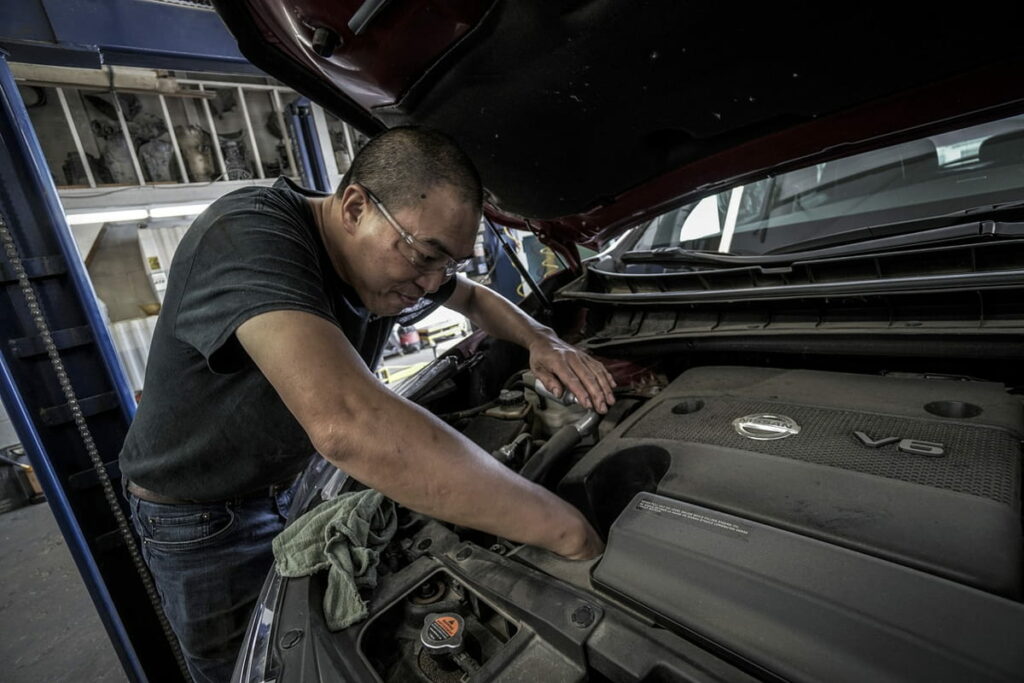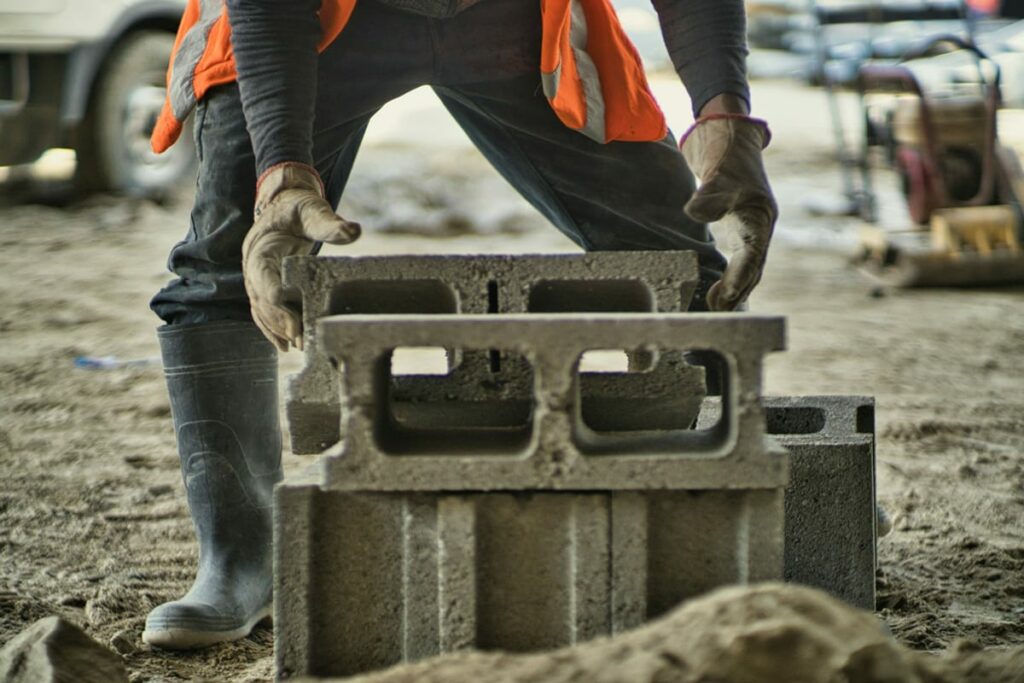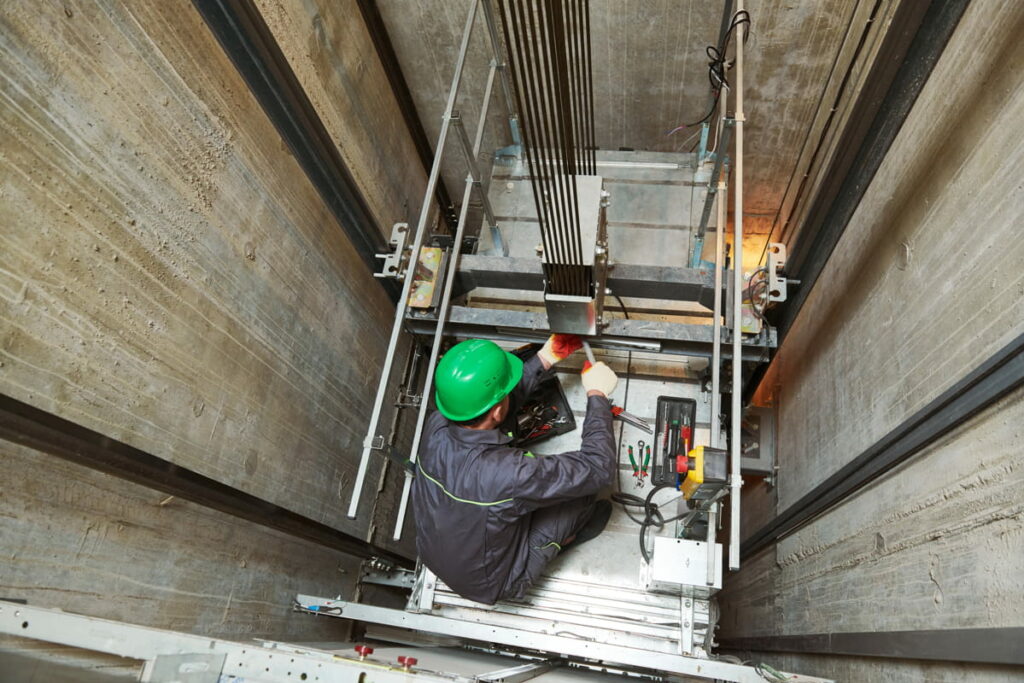April 14, 2025 • Articles • Blog • Finding Your Path • Working in the Trades
17 Blue Collar Job Examples
A blue-collar job generally involves physical labor or skilled trades. Some blue collar job examples include aircraft mechanics, auto mechanics, boilermakers, carpenters, concrete finishers, electricians, elevator installers and repairers, and HVAC mechanics and installers. These jobs often require specialized knowledge and skills.
1. Aircraft Mechanics

Average Salary: $73,350
What They Do: Aircraft mechanics and technicians are responsible for installing, testing, calibrating, and repairing aircraft systems and equipment. Their work takes place in hangars, maintenance facilities, or directly on airfields.
Training Required: Most positions often require postsecondary education, such as a certificate from a Federal Aviation Administration approved program. Some professionals enter the field with only a high school diploma and gain experience through on-the-job training or military service.
Job Outlook: Employment for aircraft mechanics and technicians is expected to increase by 5% between 2023 and 2033.
2. Auto Mechanics

Average Salary: $58,712
What They Do: Auto mechanics inspect and repair various types of vehicles, including cars. They work on multiple systems such as engines, transmissions, electrical components, steering, and suspension. While some diagnostics are performed using computers, much of the work involves handling greasy parts and working in tight or uncomfortable positions. Mechanics often use specialized chairs to improve comfort when working beneath vehicles.
Training Required: A high school diploma is the minimum educational requirement. Many employers prefer candidates who have completed a specialized training program.
Job Outlook: Employment for automotive service technicians and mechanics is expected to grow by 3% from 2023 to 2033, aligning with the average growth rate for all occupations.
3. Boilermakers

Average Salary: $58,914
What They Do: Boilermakers construct, repair, and install boilers, tanks, and other similar metal structures. They typically perform their duties in manufacturing facilities or on large-scale construction projects, such as ships.
Training Required: Most boilermakers learn through an apprenticeship program that provides hands-on training and technical instruction.
Job Outlook: Employment for boilermakers is projected to decline by 1% from 2023 to 2033. However, approximately 1,000 job openings are expected annually.
4. Carpenters

Average Salary: $63,886
What They Do: Carpenters construct, install, and repair structures and fixtures mainly made of wood. Their work ranges from installing kitchen cabinets to building highways and bridges, and they operate both indoors and outdoors.
Training Required: Most carpenters learn through on-the-job training and apprenticeship programs.
Job Outlook: Employment for carpenters is projected to grow by 4% from 2023 to 2033, with approximately 76,500 job openings expected each year.
5. Concrete Finishers

Average Salary: $47,601
What They Do: Concrete finishers are skilled tradespeople in the construction industry who smooth and finish concrete surfaces for various projects. Their work is physically demanding and primarily takes place on construction sites.
Training Required: A high school diploma or equivalent is typically required.
Job Outlook: Employment is projected to show little or no change from 2023 to 2033.
Learn more by visiting our article on: How to Get Into Construction.
6. Construction Laborers and Helpers

Average Salary: $37,000
What They Do: Construction laborers and helpers perform a variety of tasks, including using and supplying materials or tools, and maintaining work areas and equipment. They typically work on construction sites in physically demanding roles, often outdoors in all types of weather conditions.
Training Required: Construction laborers and helpers typically receive on-the-job training, though some employers may favor applicants with a high school diploma or equivalent.
Job Outlook: Employment for construction laborers and helpers is projected to grow by 7% from 2023 to 2033.
Learn more by visiting our article on: How to Get Into Construction.
7. Janitors and Building Cleaners

Average Salary: $36,655
What They Do: Janitors and building cleaners are responsible for maintaining cleanliness in various facilities by sweeping, mopping, sanitizing surfaces, and handling waste disposal. Their work helps ensure a safe and hygienic environment in schools, offices, hospitals, and other buildings.
Training Required: Formal education is not typically required, though some employers may prefer candidates with a high school diploma or equivalent.
Job Outlook: Employment for janitors and building cleaners is expected to grow by 3% from 2023 to 2033.
8. Electricians

Average Salary: $69,570
What They Do: Electricians are skilled tradespeople who install, maintain, and repair wiring and other components in electrical systems. They work in both residential and commercial settings, ensuring electrical systems function safely and efficiently.
Training Required: Most electricians gain expertise through apprenticeships, but some begin by attending a technical school. Note that being licensed is required in most states.
Job Outlook: Employment for electricians is projected to grow by 11% from 2023 to 2033.
9. Elevator Installers And Repairers

Average Salary: $81,184
What They Do: Elevator installers and repairers are responsible for assembling, installing, and maintaining elevators and related equipment to ensure a safe and efficient operation.
Training Required: A high school diploma or equivalent is typically required, with most workers learning through apprenticeships. Licensing is required in most states.
Job Outlook: Employment is projected to grow by 6% from 2023 to 2033, which is faster than the average for all occupations.
10. Firefighters

Average Salary: $72,268
What They Do: Firefighters extinguish fires and respond to emergencies that threaten life, property, or the environment. The job requires quick thinking, the ability to handle high-stress situations, and a strong commitment to public service.
Training Required: A high school diploma and emergency medical services training are typically required. Most firefighters complete training at a fire academy, and additional credential requirements may vary by location.
Job Outlook: Employment for firefighters is projected to grow by 4% from 2023 to 2033.
11. HVAC Mechanics and Installers

Average Salary: $64,965
What They Do: HVAC technicians install, maintain, and repair heating, ventilation, and air conditioning systems in homes, schools, hospitals, and other buildings. Their work may require operating in tight spaces or outdoor environments, either independently or as part of a maintenance company.
Training Required: A postsecondary nondegree award is typically required, along with extensive on-the-job training. Licensing or certification may be necessary, depending on the state.
Job Outlook: Employment for HVAC technicians is projected to grow by 9% from 2023 to 2033, a rate much faster than the average for all occupations.
12. Power Plant Operators

Average Salary: $74,462
What They Do: Power plant operators manage the generation and distribution of electricity, ensuring that power plants operate safely and efficiently.
Training Required: A high school diploma or equivalent is typically required. New hires undergo extensive on-the-job training, and nuclear power reactor operators must obtain a license.
Job Outlook: Employment for power plant operators is projected to decline by 8% from 2023 to 2033. However, an average of 3,800 job openings are expected each year.
13. Plumbers

Average Salary: $64,810
What They Do: Plumbers install and repair piping systems and fixtures in homes, businesses, factories, and other buildings. They are often on call for emergencies, making evening and weekend work common.
Training Required: Most plumbers learn through an apprenticeship, though some attend a vocational-technical school before receiving on-the-job training. Licensing is required in most states.
Job Outlook: Employment for plumbers is projected to grow by 6% from 2023 to 2033, which is faster than the average for all occupations.
14. Police Officers

Average Salary: $65,600
What They Do: Police officers work to maintain public safety, enforce laws, and protect their communities. They play a critical role in preventing and responding to criminal activity, ensuring the security of the public.
Training Required: Typically, a high school diploma is required, followed by graduation from the agency’s training academy and on-the-job training. Candidates must also meet age and physical standards.
Job Outlook: Employment is projected to grow by 4% from 2023 to 2033.
15. Postal Workers

Average Salary: $35,284
What They Do: Postal service workers handle mail-related tasks, including sorting and processing mail, and delivering it to homes and businesses. Some work indoors in processing facilities, while others work outdoors delivering mail.
Training Required: No formal education is typically required, but most postal workers have at least a high school diploma. Candidates must usually pass a written exam before being hired.
Job Outlook: Employment is projected to decline by 4% from 2023 to 2033. However, approximately 35,800 job openings are expected each year.
16. Heavy and Tractor-trailer Truck Drivers

Average Salary: $51,578
What They Do: Truck drivers transport goods between locations, often covering long distances. The job can be a lifestyle choice, as drivers may spend days or even weeks away from home.
Training Required: A high school diploma is typically required, along with training from a professional truck driving school. Drivers must also obtain a special license.
Job Outlook: Employment for truck drivers is projected to grow by 5% from 2023 to 2033.
17. Welders

Average Salary: $57,561
What They Do: Welders use hand-held or remotely operated equipment to fuse, repair, or cut metal components in various industries. Their work environments vary, with some working indoors and others exposed to different weather conditions outdoors.
Training Required: A high school diploma or equivalent is typically required, along with technical training and hands-on experience.
Job Outlook: Employment for welders is projected to grow by 2% from 2023 to 2033.
Learn more by visiting our article on: Everything You Need to Know About a Career in Welding.
FAQs About Blue Collar Jobs
What Is A Blue Collar Job?
A blue-collar job typically involves manual labor or trade skills, often in industries such as construction, manufacturing, and transportation. These jobs often require specialized training and knowledge and do not always require a college degree. Some blue collar job examples include aircraft mechanics, auto mechanics, boilermakers, and carpenters.
What Are Some Blue-Collar Jobs That Do Not Require a Degree?
Many blue-collar jobs do not require a degree, though specialized training can provide a significant advantage. Here’s a short no-degree blue collar jobs list:
- Auto Mechanics
- Boilermakers
- Carpenters
- Electricians
What Are Some Blue-Collar Jobs That Do Not Require Experience?
It is possible to find blue-collar jobs without prior experience, but it can be challenging, particularly without specialized training. Some examples include:
- Concrete Finishers
- Construction Laborers and Helpers
- Janitors and Building Cleaners
- Postal Workers
DISCOVER MORE TIPS TO HELP YOU FIND YOUR PATH – GET THE BOOK & TAKE THE COURSE!
Ken Rusk is a blue-collar entrepreneur who has started several successful endeavors and mentored hundreds of young people in their pursuit of a satisfying career and fulfilling life. Discover how Ken’s approach to life and work can help you set and achieve your goals – all while avoiding the nearly inescapable trap of college debt. Get a copy the Wall Street Journal bestselling book, Blue Collar Cash today!
Note: All the data in this article has been sourced from the U.S. Bureau of Labor Statistics and Salary.com.

